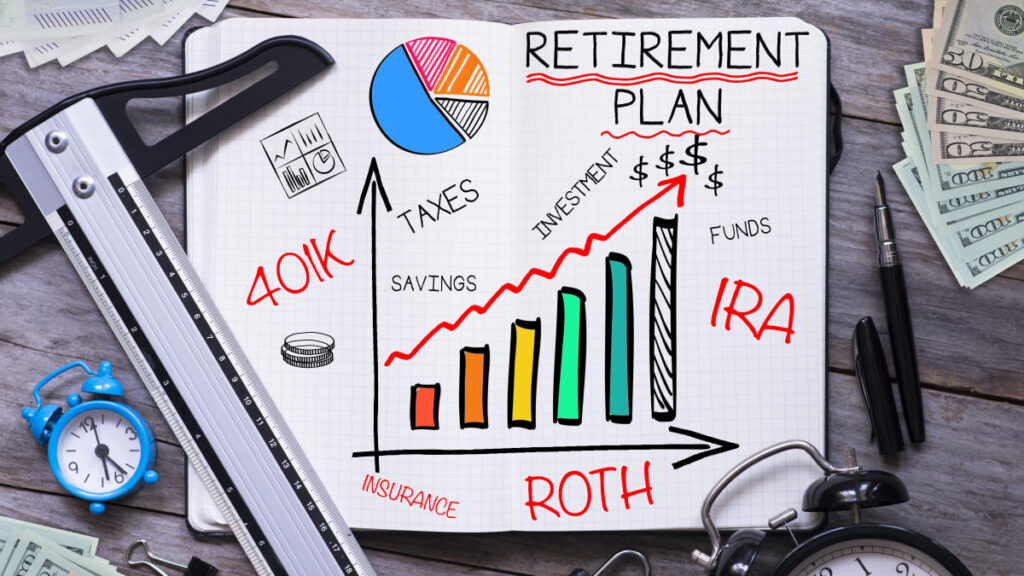Retirement planning is a crucial step in ensuring financial security and peace of mind during your golden years. It involves evaluating your current financial situation, setting retirement goals, estimating expenses, and identifying potential sources of income. Unfortunately, many people overlook the importance of retirement planning and fail to take action until it’s too late.
In this article, we will discuss the significance of retirement planning, the key elements of a comprehensive retirement plan, steps to creating a retirement planning checklist, common mistakes to avoid, and the role of professionals in the process.
Understanding the Importance of Retirement Planning
Retirement planning is not just about setting aside money for the future; it plays a crucial role in achieving financial stability. By planning ahead, you can make informed decisions, allocate your resources wisely, and ensure that you will have enough funds to maintain your desired lifestyle once you retire.
Planning for retirement involves more than just financial considerations. It also encompasses factors such as healthcare needs, housing arrangements, and potential long-term care requirements. By taking these aspects into account, you can create a comprehensive retirement plan that addresses all aspects of your future well-being.
The Role of Retirement Planning in Financial Stability
Retirement planning allows you to determine how much money you need to save and invest in order to achieve your retirement goals. It helps you analyze your income, expenses, and assets to create a realistic plan that will provide you with a comfortable retirement.
Furthermore, retirement planning enables you to take advantage of tax-efficient savings vehicles such as IRAs and 401(k) plans. By strategically utilizing these tools, you can maximize your retirement savings and potentially reduce your tax burden, allowing your money to grow more effectively over time.
Why Overlooking Retirement Planning Can Lead to Problems
Failure to prioritize retirement planning can lead to financial difficulties later in life. Without a proper plan in place, you may find yourself relying solely on inadequate government benefits or scrambling to make ends meet. Moreover, starting late means you will have less time to save and invest, making it more challenging to accumulate the necessary funds for retirement.
Additionally, overlooking retirement planning can result in missed opportunities for growth and wealth accumulation. By not actively managing your retirement savings, you may fail to capitalize on compounding interest and investment returns, which can significantly impact the size of your retirement nest egg in the long run.
Key Elements of a Comprehensive Retirement Plan
A comprehensive retirement plan consists of several key elements that work together to ensure your financial security. These include determining your retirement goals, estimating your retirement expenses, and identifying potential sources of retirement income.
Planning for retirement is a multifaceted process that requires careful consideration and foresight. It involves not only financial aspects but also emotional and lifestyle factors. By taking a holistic approach to retirement planning, you can create a roadmap that aligns with your values and aspirations, providing you with a sense of purpose and fulfillment during your golden years.
Determining Your Retirement Goals
Before you can create a retirement plan, it’s essential to have a clear idea of what you want to achieve during your retirement years. Determine the lifestyle you desire, the activities you want to engage in, and any specific financial goals you have in mind. This will help you set realistic targets for saving and investing.
Visualizing your retirement goals can be a powerful motivator in shaping your financial plan. Whether it’s traveling the world, pursuing a passion project, or spending quality time with loved ones, having a clear vision of your ideal retirement can guide your decision-making process and keep you focused on your long-term objectives.
Estimating Your Retirement Expenses
Calculating your retirement expenses can be a complex task, but it’s crucial for proper planning. Consider factors such as housing, healthcare, daily living expenses, travel, and any other expenses that may arise during your retirement. Remember to take into account inflation and potential healthcare costs.
Anticipating your future expenses requires a thoughtful analysis of your current spending habits and potential lifestyle changes. By creating a detailed budget that accounts for both essential and discretionary expenses, you can gain a clearer understanding of how much income you’ll need to sustain your desired standard of living in retirement. Additionally, factoring in unexpected costs and building a contingency fund can provide you with a financial safety net for any unforeseen circumstances that may arise.

Steps to Creating Your Retirement Planning Checklist
Creating a retirement planning checklist can help you stay organized and ensure that no crucial elements are overlooked. Here are some key steps to include in your checklist:
Retirement planning is a crucial aspect of financial management that requires careful consideration and strategic decision-making. By creating a comprehensive retirement planning checklist, you can effectively map out your financial future and secure a comfortable retirement.
Evaluating Your Current Financial Situation
Start by assessing your current financial situation. Calculate your net worth and evaluate your income, expenses, and existing assets. This will give you a clear picture of your financial standing and help you set realistic goals for your retirement plan.
Consider consulting with a financial advisor to gain valuable insights into optimizing your current financial situation and maximizing your retirement savings potential. A professional advisor can provide personalized recommendations tailored to your specific needs and goals, ensuring a solid foundation for your retirement plan.
Identifying Potential Sources of Retirement Income
Map out all potential sources of retirement income, such as pensions, social security benefits, investments, and any other assets that will generate income during your retirement. This will help you determine how much you need to save independently to bridge the gap.
Furthermore, explore alternative income streams, such as rental properties, part-time work opportunities, or passive income ventures, to supplement your retirement funds and enhance your financial security in retirement. Diversifying your income sources can provide added stability and flexibility in managing your finances during your retirement years.
Common Mistakes in Retirement Planning and How to Avoid Them
When it comes to retirement planning, there are several common mistakes that people often make. By being aware of these pitfalls, you can take steps to avoid them and optimize your retirement plan.
Planning for retirement is a crucial step in securing your financial future, but it’s essential to consider all aspects of your post-work life. In addition to financial planning, think about how you envision spending your time during retirement. Whether it’s traveling, pursuing hobbies, or volunteering, having a clear idea of your retirement lifestyle can help shape your financial plan.
Underestimating Healthcare Costs in Retirement
One of the most significant mistakes people make is not adequately accounting for healthcare costs during retirement. Medical expenses can add up quickly, and failing to plan for them can disrupt your financial stability. Consider getting long-term care insurance and budgeting for potential healthcare needs.
Furthermore, it’s essential to prioritize your health and wellness as you approach retirement. Maintaining a healthy lifestyle can reduce the risk of certain medical conditions and potentially lower your healthcare costs in the long run. Consider incorporating regular exercise, a balanced diet, and preventive care into your retirement planning.
Neglecting to Adjust the Plan Over Time
Your retirement plan is not set in stone; it should be reviewed and adjusted periodically. Failing to account for changes in your life circumstances, market conditions, or unexpected expenses can derail your retirement plans. Regularly evaluate your plan and make necessary adjustments to ensure its relevance.
As you navigate through different life stages, such as marriage, parenthood, or career changes, your retirement goals and priorities may evolve. Take the time to reassess your financial situation and retirement objectives regularly. By staying proactive and adaptable, you can stay on track towards a secure and fulfilling retirement.

The Role of Professionals in Retirement Planning
While it is possible to create a retirement plan on your own, consulting with professionals can provide valuable expertise and guidance. Financial advisors specializing in retirement planning can help optimize your plan, ensure that you are on track to meet your goals, and address any concerns or questions you may have.
When to Consult a Financial Advisor
If you find the retirement planning process overwhelming or if you have a complex financial situation, it may be wise to consult a financial advisor. They can help analyze your specific circumstances, provide personalized advice, and create a tailored retirement plan that suits your needs.
How Retirement Planners Can Help
Retirement planners have the knowledge and experience to navigate the complexities of retirement planning. They can assist in creating an investment strategy, optimizing your taxes, and ensuring that your retirement plan aligns with your long-term financial goals. Their expertise can give you peace of mind and confidence in your retirement plan.
However, it’s important to note that retirement planning is not a one-size-fits-all approach. Each individual has unique circumstances and goals, and this is where the role of professionals becomes even more crucial. When you consult a financial advisor, they take the time to understand your specific situation and develop a plan that is tailored to your needs.
One of the key benefits of working with a professional is their ability to analyze your financial situation comprehensively. They will assess your current income, expenses, assets, and liabilities to create a realistic retirement plan. By considering all aspects of your financial life, they can identify potential gaps or areas that need improvement.
Additionally, financial advisors have access to a wide range of tools and resources that can enhance your retirement plan. They stay up-to-date with the latest market trends, investment opportunities, and tax strategies. This knowledge allows them to provide you with valuable insights and recommendations that can help you make informed decisions.
Furthermore, professionals can also help you navigate the complex world of retirement income sources. They can guide you through the different options available, such as Social Security, pensions, annuities, and investment withdrawals. By understanding the pros and cons of each income source, you can make choices that maximize your retirement income and minimize potential risks.
In conclusion, while it is possible to create a retirement plan on your own, consulting with professionals can greatly enhance your chances of achieving a comfortable and fulfilling retirement. Their expertise, personalized advice, and comprehensive analysis can help you optimize your plan, avoid common mistakes, and secure your financial future. So, don’t hesitate to reach out to a financial advisor and take the necessary steps towards a worry-free retirement.


